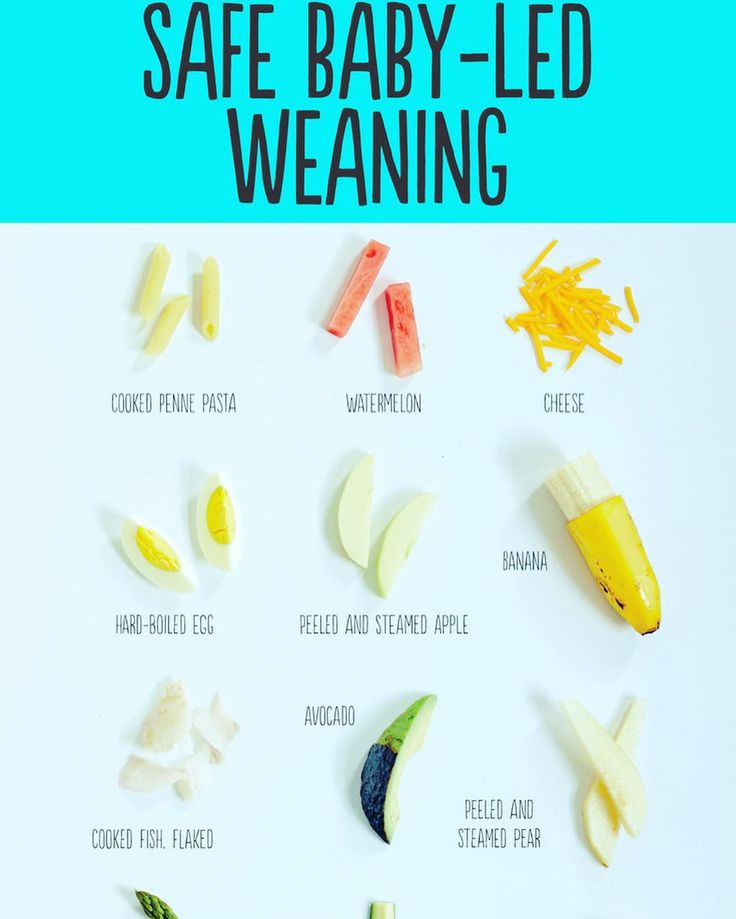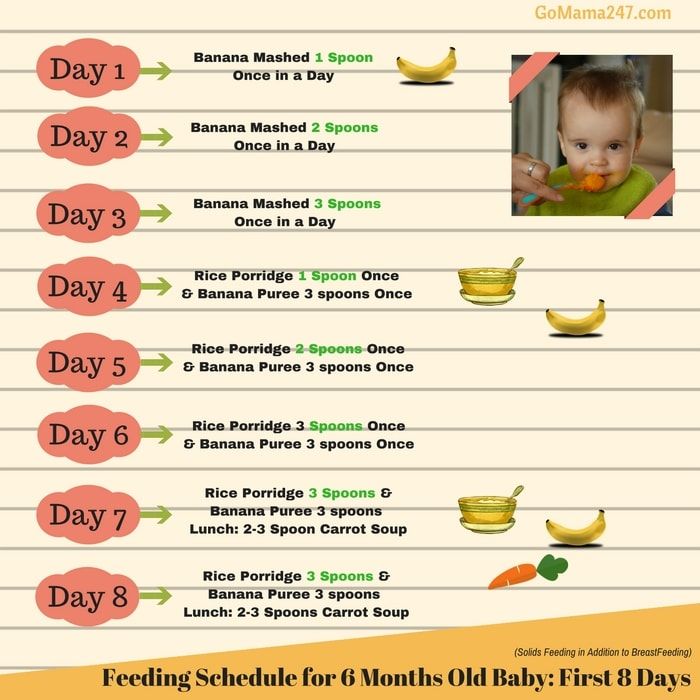Food amounts for babies
How Often and How Much Should Your Baby Eat?
By: Sanjeev Jain, MD, FAAP
One of the most common questions new parents have is how often their baby should eat. The best answer is surprisingly simple: in general, babies should be fed whenever they seem hungry.
How do I know when my baby is hungry?
For babies born
prematurely or with certain medical conditions, scheduled feedings advised by your pediatrician are best. But for most healthy, full-term infants, parents can look to their baby rather than the clock for hunger cues. This is called feeding on demand, or
responsive feeding.
Hunger cues
A hungry baby often will cry. But it's best to watch for hunger cues before the baby starts crying, which is a late sign of hunger and can make it hard for them to settle down and eat.
Some other typical hunger cues in babies:
Licking lips
Sticking tongue out
Rooting (moving jaw and mouth or head in search of breast)
Putting his/her hand to mouth repeatedly
Opening her mouth
Fussiness
Sucking on everything around
It is important to realize, however, that every time your baby cries or sucks it is not necessarily because he or she is hungry. Babies suck not only for hunger, but also for comfort; it can be hard at first for parents to tell the difference. Sometimes, your baby just needs to be cuddled or changed.
General guidelines for baby feeding
It is important to remember all babies are different―some like to snack more often, and others drink more at one time and go longer between feedings. However, most babies will drink more and go longer between feedings as they get bigger and their tummies can hold more milk:
Most newborns eat every 2 to 3 hours, or 8 to 12 times every 24 hours. Babies might only take in half ounce per feeding for the first day or two of life, but after that will usually drink 1 to 2 ounces at each feeding. This amount increases to 2 to 3 ounces by 2 weeks of age.
At about 2 months of age, babies usually take 4 to 5 ounces per feeding every 3 to 4 hours.
At 4 months, babies usually take 4 to 6 ounces per feeding.

At 6 months, babies may be taking up to 8 ounces every 4 to 5 hours.
Most babies will increase the amount of formula they drink by an average of 1 ounce each month before leveling off at about 7 to 8 ounces per feeding. Solid foods should be started at about 6 months old.
Concerns about overfeeding or underfeeding your baby
Too full?
Babies are usually pretty good at eating the right amount, but they can sometimes take in more than they need. Infants who are bottle feeding may be more likely to overfeed, because drinking from a bottle may take less effort than breastfeeding.
Overfed babies can have stomach pains, gas, spit up or vomit and be at higher risk for obesity later in life. It's better to offer less, since you can always give more if your baby wants it. This also gives babies time to realize when they're full.
If you are concerned your baby wants to eat
all the time―even when he or she is full―talk with your pediatrician.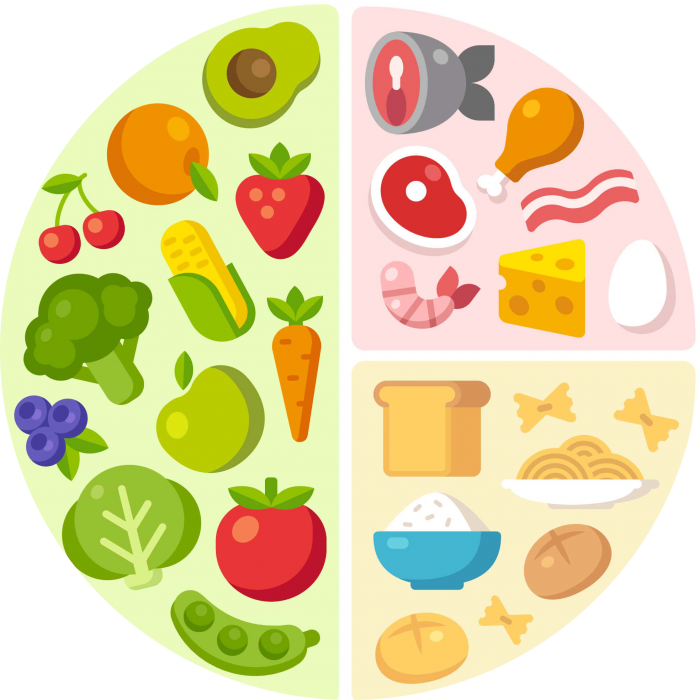 Pacifiers may be used after feeding to help sooth healthy-weight babies who like to suck for comfort, rather than nutrition. For babies who are breastfed, it's best to wait to offer pacifiers until around 3 to 4 weeks of age, when breastfeeding is well-established.
Pacifiers may be used after feeding to help sooth healthy-weight babies who like to suck for comfort, rather than nutrition. For babies who are breastfed, it's best to wait to offer pacifiers until around 3 to 4 weeks of age, when breastfeeding is well-established.
Trouble gaining weight?
Most babies will double their birth weight by 5 months of age and triple their birth weight by their first birthday. If your baby is having trouble gaining weight, don't wait too long between feeding―even if it means waking your baby. Be sure to talk with your pediatrician about how often and how much to feed your baby.
How do I know if my baby is getting enough to eat?
Daily diapers
A newborn's
diaper is a good indicator of whether he or she is getting enough to eat. In the first few days after birth, a baby should have 2 to 3 wet diapers each day. After the first 4 to 5 days, a baby should have at least 5 to 6 wet diapers a day. Stool frequency is more variable and depends whether your baby is
breastfed or formula fed.
Growth charts
During regular health check-ups, your pediatrician will check your baby's weight and plot it on a growth chart. Your baby's progress on the growth chart is one way to tell whether or not they are getting enough food. Babies who stay in healthy growth percentile ranges are probably getting a healthy amount of food during feedings.
Remember
Talk with your pediatrician if you have any questions or concerns about your baby getting the right amount to eat.
More information:
- Making Sure Your Baby is Getting Enough Milk
- Amount and Schedule of Formula Feedings
- Is Your Baby Hungry or Full? Responsive Feeding Explained (Video)
- Remedies for Spitty Babies
- Ask the Pediatrician: With the baby formula shortage, what should I do if I can't find any?
- Ask the Pediatrician: How should we feed our baby if we're running low on money?
-
Airplane Choo Choo: A Feeding Guide for Children (National Dairy Council)
About Dr.
 Jain:
Jain:
Sanjeev Jain, MD, FAAP, is a Clinical Associate Professor of General Pediatrics and Adolescent Medicine at the University of Wisconsin School of Medicine and Public Health. Within the American Academy of Pediatrics, he is a member of the Section on International Child Health and the Wisconsin State Chapter.
The information contained on this Web site should not be used as a substitute for the medical care and advice of your pediatrician. There may be variations in treatment that your pediatrician may recommend based on individual facts and circumstances.
Amount and Schedule of Baby Formula Feedings
- In the first week after birth, babies should be eating no more than about 1 to 2 ounces (30 to 60 ml) per feed.
- During the first month, babies gradually eat more until they take 3 to 4 ounces (90 to 120 ml) per feed, amounting to 32 ounces per day.
 Formula-fed babies typically feed on a more regular schedule, such as every 3 or 4 hours. Breastfed babies usually take smaller, more frequent feedings than formula-fed infants.
Formula-fed babies typically feed on a more regular schedule, such as every 3 or 4 hours. Breastfed babies usually take smaller, more frequent feedings than formula-fed infants.
If your baby sleeps longer than 4 to 5 hours during the first few weeks after birth and starts missing feedings, wake them up and offer a bottle.
By the end of the first month: Your baby will be up to at least 3 to 4 ounces (120 mL) per feeding, with a fairly predictable schedule of feedings about every 3 to 4 hours.
By 6 months: Your baby will consume 6 to 8 ounces (180–240 mL) at each of 4 or 5 feedings in 24 hours.
Formula feeding based on body weight
On average, your baby should take in about 2½ ounces (75 mL) of infant formula a day for every pound (453 g) of body weight. But they probably will regulate their intake from day to day to meet their own specific needs, so let them tell you when they've had enough.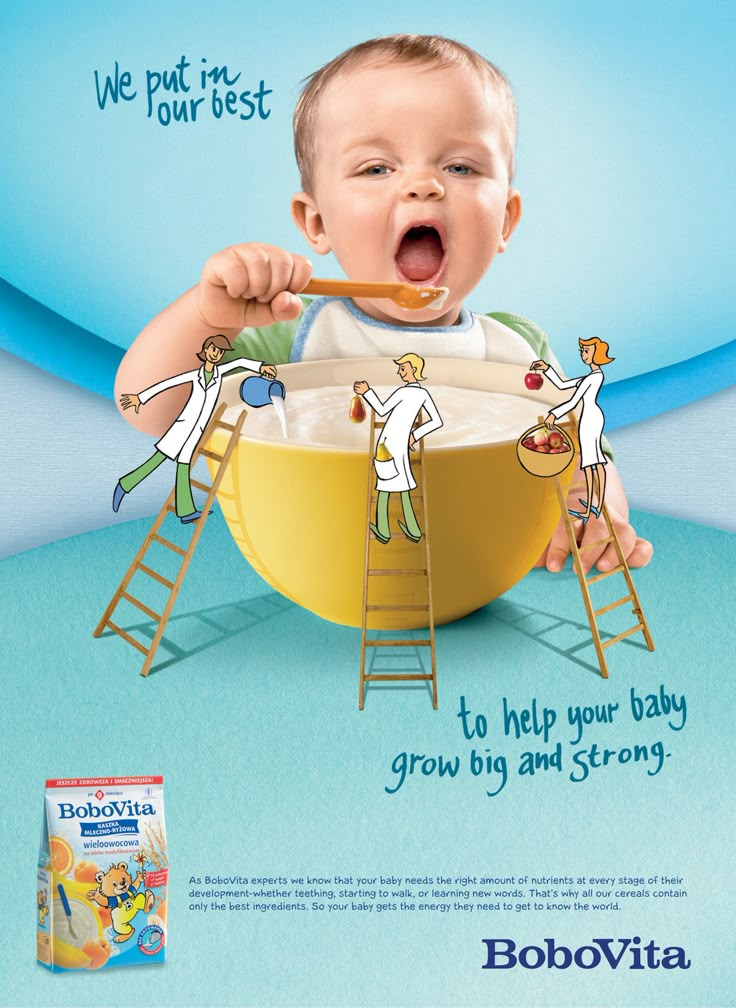 If they become fidgety or easily distracted during a feeding, they're probably finished. If they drain the bottle and continues smacking their lips, they might still be hungry.
If they become fidgety or easily distracted during a feeding, they're probably finished. If they drain the bottle and continues smacking their lips, they might still be hungry.
There are high and low limits, however. If your baby consistently seems to want more or less than this, discuss it with your pediatrician. Your baby should usually drink no more than an average of about 32 ounces (960 mL) of formula in 24 hours. Some babies have higher needs for sucking and may just want to suck on a pacifier after feeding.
On-demand feeding
Initially it is best to feed your formula-fed newborn a bottle on demand, or whenever they cry with hunger. As time passes, your baby will begin to develop a fairly regular timetable of their own. As you become familiar with their signals and needs, you'll be able to schedule their feedings around their routine.
Eating & sleeping patterns
Between 2 and 4 months of age (or when the baby weighs more than 12 lb. [5.4 kg]), most formula-fed babies no longer need a middle-of-the-night feedings. They're consuming more during the day, and their sleeping patterns have become more regular (although this varies considerably from baby to baby). Their stomach capacity has increased, too, which means they may go longer between daytime feedings—occasionally up to 4 or 5 hours at a time.
They're consuming more during the day, and their sleeping patterns have become more regular (although this varies considerably from baby to baby). Their stomach capacity has increased, too, which means they may go longer between daytime feedings—occasionally up to 4 or 5 hours at a time.
If your baby still seems to feed very frequently or consume larger amounts, try distracting them with play or with a pacifier. Sometimes patterns of obesity begin during infancy, so it is important not to overfeed your baby.
Getting to know your baby's feeding needs
The most important thing to remember, whether you breastfeed or bottlefeed, is that your baby's feeding needs are unique. No book―or website―can tell you precisely how much or how often they need to be fed or exactly how you should handle them during feedings. You will discover these things for yourself as you and your baby get to know each other.
More information
- How Often and How Much Should Your Baby Eat?
- Making Sure Your Baby is Getting Enough Milk
- Is Your Baby Hungry or Full? Responsive Feeding Explained (Video)
- Remedies for Spitty Babies
- Last Updated
- 5/16/2022
- Source
- Adapted from Caring for Your Baby and Young Child: Birth to Age 5 7th Edition (Copyright © 2019 American Academy of Pediatrics)
The information contained on this Web site should not be used as a substitute for the medical care and advice of your pediatrician. There may be variations in treatment that your pediatrician may recommend based on individual facts and circumstances.
There may be variations in treatment that your pediatrician may recommend based on individual facts and circumstances.
Union of Pediatricians of Russia
Nutrition for children from 1 to 3 years of age
The period from 1 to 3 years of life is a crucial stage in the transition to an adult type of nutrition, which has certain features. In order to ensure that all the necessary nutrients enter the child's body and at the same time prevent an excess of individual nutrients, nutrition should be balanced and varied.
The daily amount of food for children aged 1 to 1.5 years should be 1000-1200 g, from 1.5 to 3 years - 1200-1500 g, the amount of food in one feeding should not exceed 300-350 ml. The diet consists of three main meals per day and two snacks. It is considered optimal when breakfast is 25% of the total energy density of the diet, lunch is 30–35%, dinner is 20%, and additional meals are about 10%. In general, the child can eat the same food as the rest of the family.
In the diet of a child of 1–3 years of age , must be present daily: meat of animals or poultry, dairy and sour-milk products, vegetables, fruits, bread, cereals, vegetable and butter; fish and eggs are included in the diet 2-3 times a week.
Cereal products: bread - 2-3 servings per day, cereals and side dishes - 1 time per day
Fruit and/or vegetables: at least 5 times a day
Dairy products: at least 3 servings per day (including those used to make cereals, yoghurts, fermented milk drinks, cottage cheese, infant formula or breast milk).
Domestic pediatricians recommend, when compiling a diet for children aged 1–3 years, preference should be given to specialized children's dairy products of industrial production that meet high quality requirements and safety indicators for this age. Most children's dairy products are additionally enriched with vitamins and/or minerals and other biologically active components, taking into account the physiological needs of children of this age.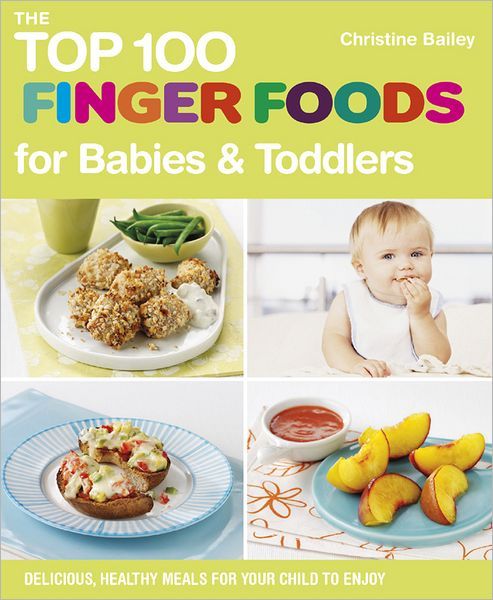 At the same time, in foreign recommendations, children over 1 year old are offered the gradual introduction of whole cow's milk, which is rich in fats necessary for proper growth and development, the absorption of vitamins A and D, the development of the child's brain and nervous system.
At the same time, in foreign recommendations, children over 1 year old are offered the gradual introduction of whole cow's milk, which is rich in fats necessary for proper growth and development, the absorption of vitamins A and D, the development of the child's brain and nervous system.
Meat dishes: 2-3 times a day
Fish dishes: 2-3 servings per week
Eggs: 2-3 per week
Dietary fats: 3-4 teaspoons of butter and/or vegetable oils per day
When cooking, use the minimum amount of salt and sugar, and do not add them to industrial products.
Offer your child a variety of foods and let them choose for themselves. Children love to eat on their own, so if possible, offer food that the child can eat with their hands.
It is important to remember that a baby can choke on pieces of food, so whatever you give your baby should be crushed or cut into small pieces that can be easily chewed.
Do not give to a small child: nuts, whole grapes, cherry tomatoes (unless quartered), whole carrots, seeds (such as pumpkin or sunflower seeds), round candies, legumes, raisins, because a child can eat them choke.
Also in the diet of children of the first 3 years of life should not be present:
Mushrooms; canned snacks, pickled vegetables and fruits
Home canned food
Dry concentrates for side dishes
Hot sauces, mustard, horseradish, pepper, vinegar, mayonnaise
Natural coffee
Juices and drinks in the form of dry concentrates; sweet carbonated drinks
Products containing food additives (flavorings, dyes of artificial origin, including chewing gum), popcorn
Combined fats; cakes and pastries
It is important to remember that children of this age should not be given too spicy and spicy foods.
How much should a newborn eat: feeding chart
0-6 months
Article
5/5 2 reviews
As soon as the long-awaited event has happened and the baby is born, the mother is faced with many questions. One of the most frequently asked: how to feed and how much should a newborn eat? Indeed, this is a very important point, since a properly selected and debugged diet allows the child to grow and develop harmoniously, promotes good health and strengthens the immune system. How to calculate the norm for a baby from the first days of life to a year?
One of the most frequently asked: how to feed and how much should a newborn eat? Indeed, this is a very important point, since a properly selected and debugged diet allows the child to grow and develop harmoniously, promotes good health and strengthens the immune system. How to calculate the norm for a baby from the first days of life to a year?
8 min. for reading Feb. 17, 2022
Contents
Listen to the experts
Calculation norms
- First weeks of life
- One to four months
- Five-six months
- Seven to twelve months
How much breast milk a newborn should eat: table
Not enough breast milk or not at all: what to do
Norms and stages of introducing complementary foods
- First stage - vegetables
- Second stage - cereals
- Third stage - fruits
- Fourth stage - meat
- Fifth stage - new flavors
An example of a daily diet for a 6-8 month old baby
Frequently Asked Questions
Listen to the experts baby's age.
 All these data are usually voiced to parents during a doctor's appointment and entered into the card for further assessment of the child's condition. Comparison of the actual weight and the prescribed norms allows you to find out whether the child is eating well enough and, if necessary, to correct mistakes made during feeding. If something is not clear to you at the appointment with the pediatrician, do not be afraid to ask again and clarify. After all, only a specialist can give competent recommendations specifically for your baby, based on the results of an examination or analysis. The advice of friends, grandmothers and mothers from various forums may be good, but they do not take into account the individual characteristics and needs of your child's body. So, they may not work or even hurt.
All these data are usually voiced to parents during a doctor's appointment and entered into the card for further assessment of the child's condition. Comparison of the actual weight and the prescribed norms allows you to find out whether the child is eating well enough and, if necessary, to correct mistakes made during feeding. If something is not clear to you at the appointment with the pediatrician, do not be afraid to ask again and clarify. After all, only a specialist can give competent recommendations specifically for your baby, based on the results of an examination or analysis. The advice of friends, grandmothers and mothers from various forums may be good, but they do not take into account the individual characteristics and needs of your child's body. So, they may not work or even hurt. Be part of Nestle Baby&Me®
Each stage of a baby's development is unique and is associated with new questions from parents. Get advice from experts.
Registration
Calculated norms
1.
 First month of life
First month of life As soon as the baby is born, it is immediately brought to the mother's breast to be fed. This helps to strengthen the immunity of the baby and stimulates lactation in the mother. During this period, there is still no milk in the breast, but there is a very nutritious transparent sweetish liquid - colostrum. It is released in the first two or three days after birth and supplies the child with all the necessary substances. To eat, the baby needs a few drops: on the first day of life, the small stomach holds only 7 milliliters. On the second day of life, the baby begins to eat more often. It needs to be fed on demand or every two to three hours, while the baby eats within 10-20 milliliters at one time. Thus, per day the norm will be approximately 90 milliliters. Starting from the third day after birth, the mother actively produces breast milk, the volume of which increases as the child grows. In the first week of life, the baby should eat from 50 to 80 milliliters of milk at a time, and 400 milliliters per day. At two weeks of age, the daily ration should be 20% of the weight of the newborn, and closer to a month - about 600 milliliters. It is important to note that these figures are approximate. Each baby needs its own, certain amount of milk or mixture, depending on individual characteristics: height, weight, mother's milk quality, calorie content of the mixture and the rate of development of the baby.
At two weeks of age, the daily ration should be 20% of the weight of the newborn, and closer to a month - about 600 milliliters. It is important to note that these figures are approximate. Each baby needs its own, certain amount of milk or mixture, depending on individual characteristics: height, weight, mother's milk quality, calorie content of the mixture and the rate of development of the baby.
See also: Breastfeeding: the first steps after childbirth
2. From one to four months
Every day the baby grows, gains weight and increases its daily portions of milk. Having reached the month, the baby is already eating 90-100 milliliters six to seven times a day. After one month, the norms become as follows:
- At two months, the child should eat from 120 to 150 milliliters at a time. The daily norm, therefore, is 700-800 milliliters.
- A three-month-old baby should eat between 150 and 180 milliliters. In this case, it is recommended to observe the frequency of feeding no more than six to seven times a day.

- From the fourth month, babies need 180-210 milliliters of milk or infant formula. The average amount per day is not less than 1/6 of the baby's weight.
3.Five-six months
A six-month-old child normally eats 210-240 milliliters at a time, and the total amount of food per day should be 1/7 of body weight, or 800-1000 milliliters. Also, if there are no contraindications, complementary foods are introduced from six months.
4. From seven to twelve months
During this period, a single portion of breast milk for a baby ranges from 210 to 240 milliliters. At the same time, the average amount per day is not less than 1/8 of the child's body weight. Vegetable, fruit and meat purees, dairy-free and milk porridges are introduced into the diet (if the baby is not allergic to cow's milk proteins).
Below is a table that describes in detail the daily intake of a newborn for each age up to a year.
How much breast milk should a newborn eat: table
| Child's age | The amount of milk eaten per feeding, ml | The amount of milk eaten per day, ml |
| 3-4 days | 20–60 | 200–300 |
| 1 week | 50–80 | 400 |
| 2 weeks | 60–90 | 1/5 child weight |
| 1 month | 100–110 | 600 |
| 2 months | 120-150 | 800 |
| 3 months | 150–180 | 1/6 child weight |
| 4 months | 180–210 | 1/6 child weight |
| 5-6 months | 210-240 | 1/7 baby weight (800-1000) |
| 7-12 months | 210-240 | 1/8 weight baby |
Important!
Remember that every child is unique, has individual characteristics and needs.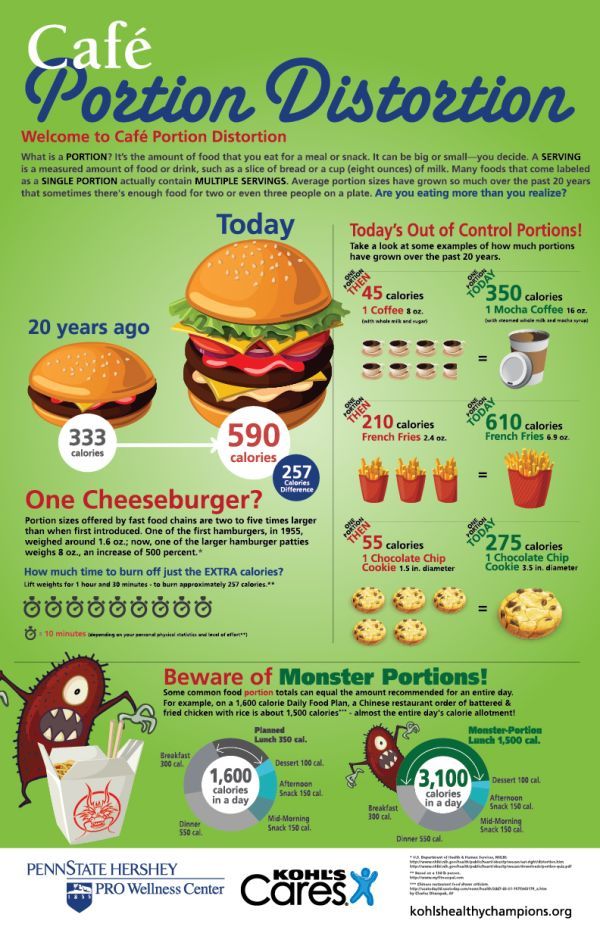 Therefore, slight deviations from the standard indicators are quite possible.
Therefore, slight deviations from the standard indicators are quite possible.
Not enough breast milk or not at all: what to do
When a baby cries after waking up, he is hungry. Modern doctors do not advise mothers to maintain any strict feeding schedule. If the mother gives the baby a breast when he asks, and the baby eats for her own pleasure and at the same time sleeps soundly and well, smiles and is not naughty, then she is full and completely satisfied.
But if the baby cries and sleeps badly, then perhaps he does not have enough milk. In this case, check if the baby is eating his age norm, and try to keep track of this indicator in the future. Found that you don't have enough breast milk? Do not worry, it is better to immediately consult a doctor. The specialist will help you find a way to support milk production and improve lactation.
If you cannot solve the problem and normalize lactation, consult a pediatrician and find the right supplemental formula for your child. With strict observance of all the doctor's recommendations, instructions for preparation and dosages indicated on the package, the mixture makes it possible to compensate for the lack of breast milk and provide the baby with the necessary amount of nutrients.
With strict observance of all the doctor's recommendations, instructions for preparation and dosages indicated on the package, the mixture makes it possible to compensate for the lack of breast milk and provide the baby with the necessary amount of nutrients.
Important!
Even if you don't have enough breast milk to fully meet your baby's needs, try to remain on partial breastfeeding for as long as possible. After all, the ideal food for a child is mother's milk.
Complementary feeding rules and stages
As a rule, complementary foods are introduced from the age of six months. Before you start exploring new products, you should consult with your pediatrician. In general, different types of food are introduced in stages, starting with very small portions.
1.First step - vegetables
According to the World Health Organization (WHO) the best starting food is a one-component vegetable puree, such as zucchini, broccoli, cauliflower or potatoes. If everything goes well, you can try pumpkin, carrot, pea and tomato puree a little later.
If everything goes well, you can try pumpkin, carrot, pea and tomato puree a little later.
It takes seven to ten days to fully introduce the product into the baby's diet. We start with half or a whole teaspoon once a day until breastfeeding. If there are no allergic or other adverse reactions, you can continue the introduction of this product, gradually increasing the dose to a full serving - 100-150 grams.
2. The second stage - cereals
After the introduction of vegetable puree, we recommend diversifying the baby's menu with cereals. For acquaintance, it is better to choose liquid one-component gluten-free cereals, for example, rice or buckwheat. Then you can add oatmeal or semolina.
The initial portion of porridge is half or one teaspoon. Gradually increase the portion to a full - 150 grams.
3.Third stage — fruits
We also start fruit complementary foods with one-component low-allergenic purees, such as apple, pear, plum, banana. These products are not only tasty, but also contain vitamins and minerals necessary for the child.
These products are not only tasty, but also contain vitamins and minerals necessary for the child.
Fruit purees are also introduced with caution, starting with half or a whole teaspoon. Gradually, the portion increases to 100-150 grams.
Find out more: Gerber Baby Food: Puree Range
4.Stage Four - Meat
Meat is an essential product for development, rich in iron and protein, which is well absorbed in the body. It is introduced in the form of a homogeneous one-component puree from dietary turkey, rabbit, chicken, veal or lamb.
At the beginning we give a try - half or one teaspoon, over time we bring the portion to 60 grams.
5. The fifth stage - new tastes
After the successful introduction of the above products, the baby forms a full-fledged varied menu. So you can introduce the young gourmet to new flavors that could previously provoke an allergy: multi-component purees, fruit and cereal cocktails, children's snacks, pieces of fresh fruits and vegetables.
See also: Introduction of complementary foods to children with food allergies
Example of a daily diet for a baby at 6-8 months
A child from six to eight months should be given complementary foods three times a day. Further, at the age of nine to eleven months, the amount is increased to four times a day. To make it easier and clearer, check out two options for a full-fledged daily diet, which outlines what and how much a newborn should eat.
See also: Nutrition for a 7-month-old baby: making a menu for a baby
Popular questions
1. How to warm up breast milk?
Use the bottle warmer to warm breast milk that has been stored in the refrigerator. If this is not at hand, put a tightly closed bottle in a container of warm water and hold it there until the milk warms to body temperature - 37 ° C.
2. How often should a newborn eat?
A newborn needs to be fed every 2-3 hours, ie 10-12 times a day.
3. How much milk does a newborn eat?
During the first days of life, the baby has a very small stomach and a poorly developed sucking reflex. Therefore, for one feeding, the newborn eats 7-9 milliliters of colostrum. Breast milk from the mother appears only on the third or fourth day.
4. How to calculate how much a child should eat?
To understand how much a newborn should eat, you need to know his age and weight. Data for calculation: from 10 days to 1.5 months, the baby needs such an amount of food, the weight of which is approximately 1/5 of the child's body weight; from 1.5 to 4 months - 1/6, from 4 to 6 months - 1/7; from 6 to 8 months - 1/8; from 8 to 12 months - 1/9 of the body weight.
Articles on the topic:
Breastfeeding: benefits for the baby, health for the mother 12 rules of healthy nutrition for children Baby does not eat well, how to feed?
Latest reviews
Average customer rating
2 customer ratings
Snapshot of community ratings
- 5 2
- four 0
- 3 0
- 2 0
- one 0
Recommended Articles
0-6 months
Article
Quantity and quality of protein in breast milk
The amount of protein in breast milk is perfectly adapted to your baby's age and needs at every stage of their development.
0-6 months
Article
Buying and storing baby food
Establishing a safe and wholesome diet is an important task that is entirely the responsibility of adults. This means that every parent must know the rules for choosing, storing and feeding the smallest.
0-6 months
Article
Diet during lactation
During lactation, the mother's body uses nutrients primarily for milk production and then for itself.
0-6 months
Article
The diet of a child at 7 months: we make a menu for the baby
What should be the menu of a child at 7 months? What foods and in what quantity can be introduced into the diet at this age? When and at what intervals to give the baby to eat? We will help develop an approximate menu for a 7-month-old baby and answer the most exciting questions regarding the nutrition of a baby up to a year old.
0-6 months
Article
Feeding a nursing mother
Most of the nutrients your baby gets through breast milk comes from your body's stores. Therefore, do not forget that the menu of a nursing mother plays an important role!
0-6 months
Article
Proper nutrition is the basis of future health
During the first 1000 days of a baby's life, optimal nutrition largely determines the growth and development of the child in the present and future. A balanced diet, which contains the most important macro and micronutrients, is an important investment in a child's future health.
0-6 months
Article
Major food allergens
An allergic reaction in a child, just like in an adult, occurs when the body mistakenly perceives a substance as harmful, in other words, it is a defensive reaction to an invasion that actually did not occur.
0-6 months
Article
How to help your baby sleep
0 reviews
Babies love to sleep, eat and then repeat. Correctly? Yes, except that sleep sometimes takes effort. Unfortunately, there is no magic sleep formula that works for everyone. But we have put together a few ways to help your baby fall asleep. Try our tips and you may soon find that your baby's sleep has improved.
0-6 months
Article
nut allergy
About 1% of the population is known to be allergic to nuts.
0-6 months
Article
Hair loss during breastfeeding (HB): what to do?
0 reviews
The problem of hair loss during lactation is quite common. This process is associated with a number of factors and is generally considered natural. Why does hair fall out after childbirth and how can I get rid of this problem? More on this later in the article.
This process is associated with a number of factors and is generally considered natural. Why does hair fall out after childbirth and how can I get rid of this problem? More on this later in the article.
0-6 months
Article
Allergy in children: types, causes, symptoms, diagnosis and treatment of the disease
Every third child in Europe has an increased risk of childhood allergies. Therefore, with the advent of the baby, it is very important to understand how allergies manifest themselves in children, what types, causes of reactions, and how to diagnose this problem.
0-6 months
Article
How to help a child with colic
0 reviews
Babies cry. Some babies cry more than others. If your otherwise healthy baby under five months of age has repeated bouts of uncontrollable crying, it could be newborn colic.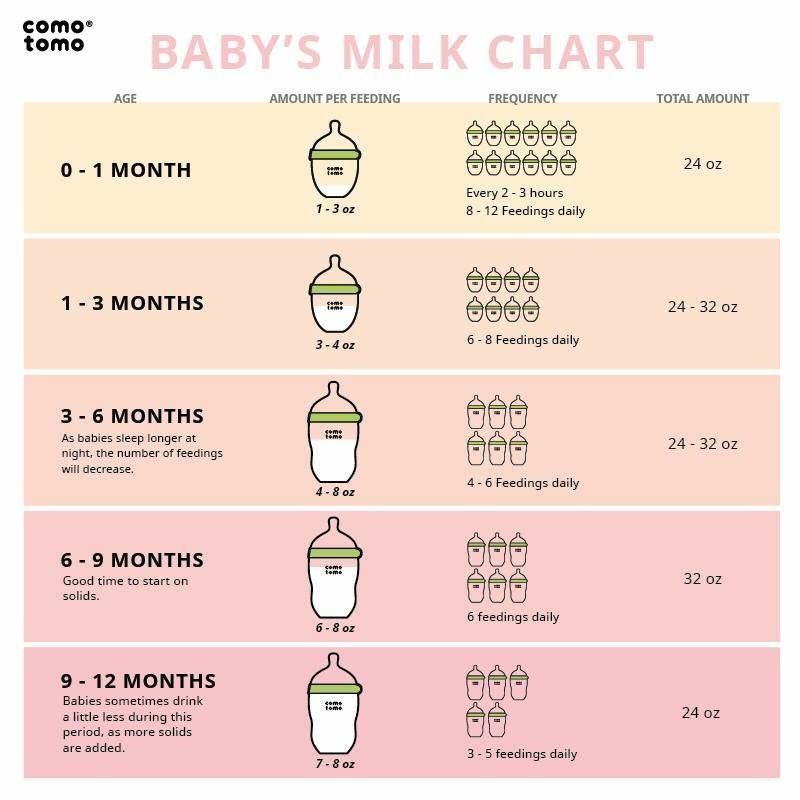 And this is equally unpleasant for both parents and crumbs. We have prepared a list of recommendations on how to help your baby with colic.
And this is equally unpleasant for both parents and crumbs. We have prepared a list of recommendations on how to help your baby with colic.
0-6 months
Article
What to feed a child with diarrhea?
0 reviews
Diarrhea is a condition in which the patient has frequent liquid or watery bowel movements. May be accompanied by abdominal pain, vomiting, severe weight loss, fever, or bleeding.
0-6 months
Article
Saving the Planet and Eco-Educating a Child: Tips for Parents
0 reviews
Saving the planet should not stop because you have a baby. Yes, children are little bundles of joy that make a mess, demand toys and gadgets.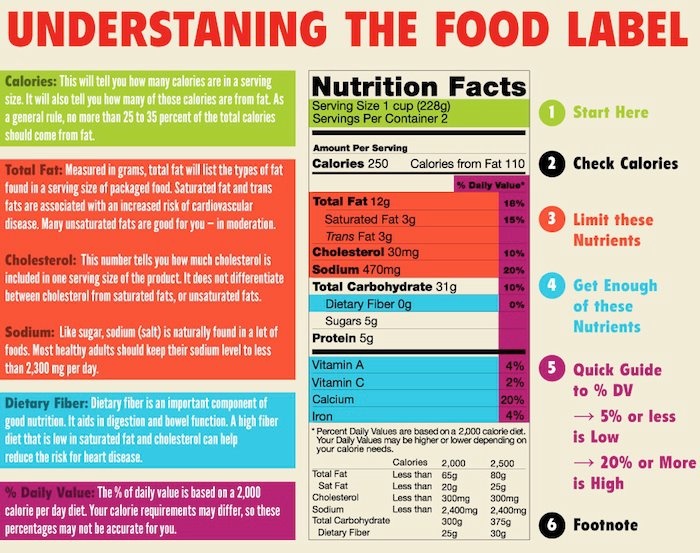 But we have a list of simple eco-parenting tips that will make your life greener.
But we have a list of simple eco-parenting tips that will make your life greener.
0-6 months
Article
Why is the baby crying
0 reviews
What causes a baby to cry? If you're struggling to figure out what your baby is trying to tell you with their cry, check out this list. Here you can find probable causes of newborn crying and tips on how to soothe your baby.
0-6 months
Article
What fruits can a nursing mother: nutrition while breastfeeding
Fruit is one of the most important sources of vitamins for humans. Both mother and child need them. What fruits with HB can a nursing mother? And is it true that strawberries and citrus fruits should be excluded from the daily diet? We will try to answer these in our article.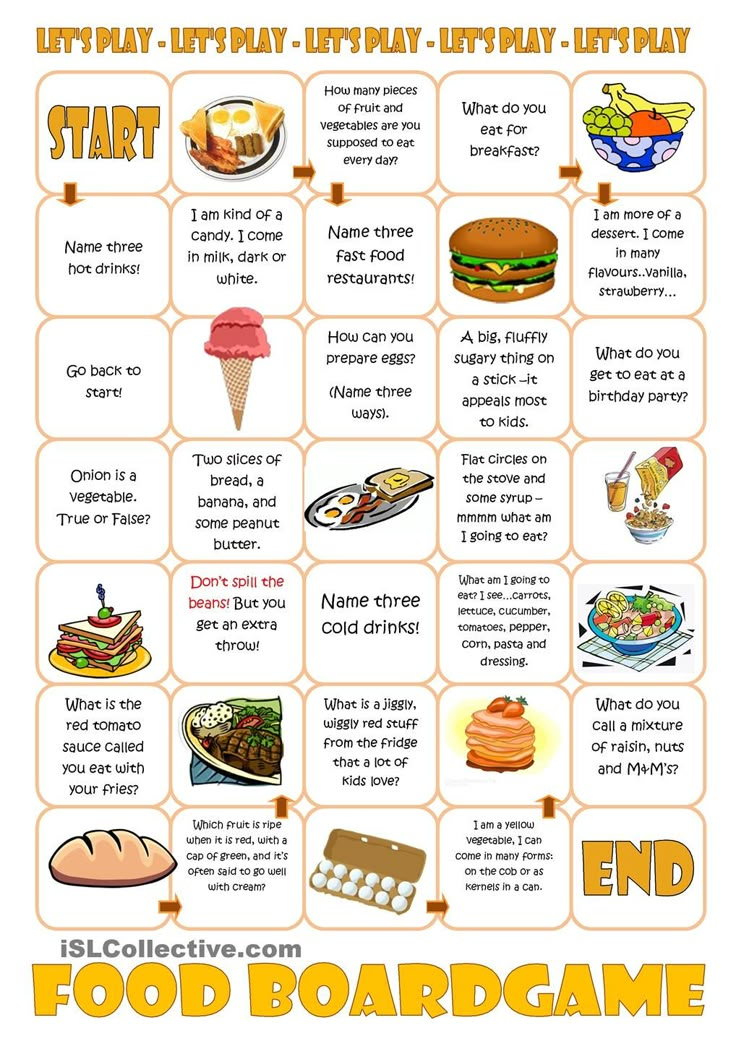
Pregnancy
Article
breast milk oligosaccharides
Human milk oligosaccharides are one of the most enigmatic components whose functions scientists have recently discovered. Find out what oligosaccharides are and what benefits they bring to your baby.
0-6 months
Article
Smart kid - mom's dream
Every mother dreams that her child will grow up smart and intelligent. The full development of the child from birth is influenced by many factors, one of which is a balanced diet.
0-6 months
Article
How to make a home safe for a child
0 reviews
How to secure your apartment or house for a child? Use our checklist to prepare everything in advance and minimize the risk of accidents.